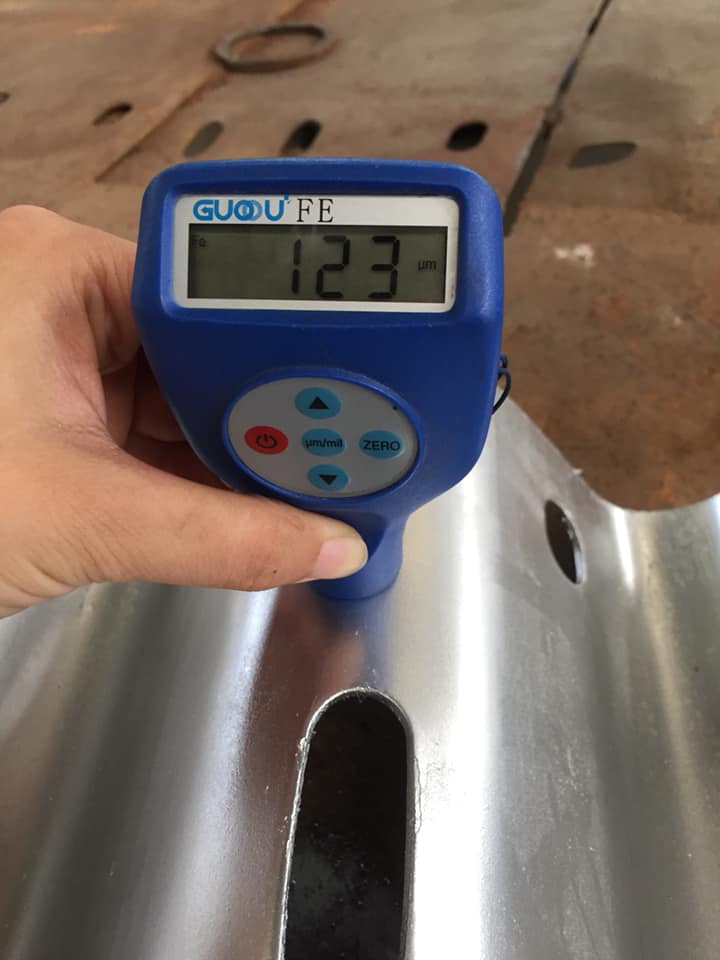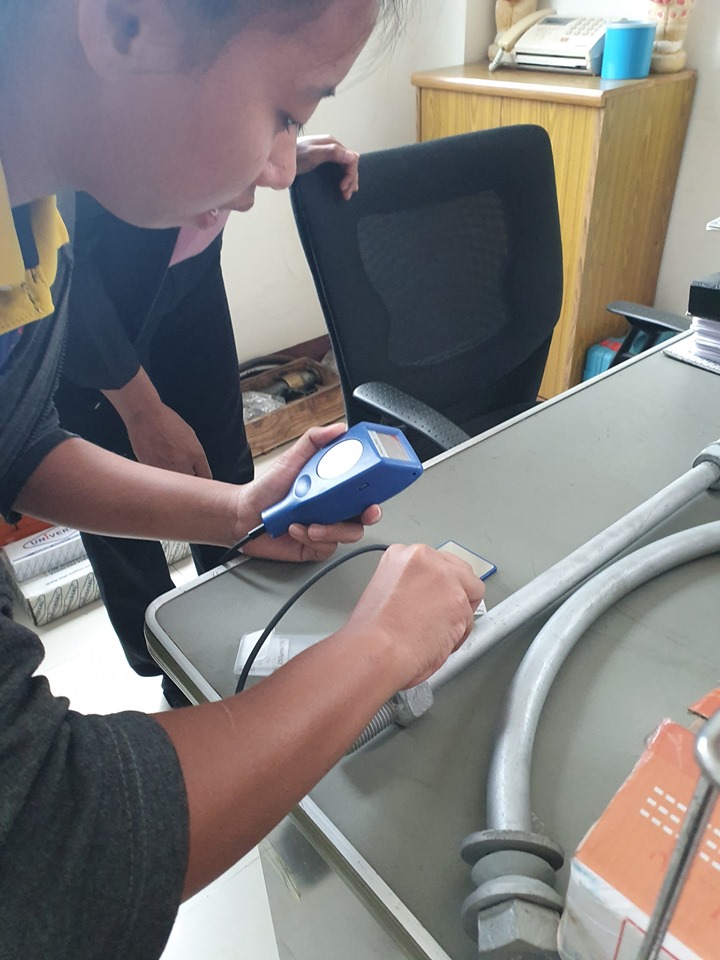One of the metal surface treatment technologies for the galvanized layer is to form a zinc coating on the surface of the base metal by electroplating, hot dipping or zinc spraying, which is mainly used to prevent steel from corroding in the atmosphere. When inspecting galvanized parts, our requirements for the quality of the zinc layer mainly include the appearance, thickness (adhesion) and adhesion strength (adhesion) to be tested, then how do we judge and accept the thickness of the galvanized layer?

The answer is: Coating thickness gauge. Since the galvanized layer is often applied to the iron substrate, the user can choose the magnetic coating thickness gauge according to the actual galvanized parts, or directly choose the iron-aluminum dual-purpose model.
The protective performance of the hot-dip galvanized layer is usually 5-15μm in thickness, while the hot-dip galvanized layer is generally above 35μm, even as high as 200μm. Hot-dip galvanizing has good coverage, dense coating and no organic inclusions. We take hot-dip galvanized seamless pipe as an example, which can be divided into two categories:
One is hanging galvanizing: the average thickness of the hanging galvanized layer is 70um, and the hanging galvanized layer is uneven, and the thickness of the zinc layer is often higher than the average wall thickness;
The second is blow plating: the average thickness of the blow galvanized layer is about 30um.
Therefore, there are integrated and split types in the choice of coating thickness gauges. It is recommended to choose the split type. The flexibility and measurable environment are more extensive, and the accuracy is in line with GB/T4956-1985,
JB/T8393-1996, JJG889-95 national standard requirements. For example, Guoou GTS820F.V3 Coating Thickness Gauge, with fast, non-destructive, ultra-national precision, can be linked to PC and printer for data printing and management and other functional highlights.

Method for measuring zinc coating by coating thickness gauge
1. Zero adjustment, that is, zero adjustment on a specific zero plate, or zero adjustment on the original substrate to be measured.
2. According to the different measurement ranges of the tested samples, use appropriate standard test strips to adjust the value of calibration.
Precautions for coating thickness gauge to measure galvanized layer
1. Before measurement, zero adjustment must be made on an uncoated substrate with the same base material, thickness, measurement area, and surface curvature radius as the tested sample to ensure the accuracy of the measurement;
2. In order to ensure the accuracy of the readings, there are a few seconds between each measurement; the measurement of the coating on the surface of sandblasting and shot blasting must be calibrated in strict accordance with the calibration steps in the manual;
3. Do not pull or bend the probe wire forcefully, so as not to break the wire or cause poor contact and no signal;
4. When there are acid, alkali solutions or damp substances on the surface to be measured, cleaning must be carried out to remove these acid, alkali solutions or damp impurities to avoid damage to the probe;
5. When measuring, make the axis of the probe perpendicular to the surface of the sample to be tested;
6. Generally, the time interval between each measurement should be greater than 3 seconds.




